Japanese Beetles
By
Torey Miller
Description
To most gardeners in the United States, Japanese beetles are known as pests. They originated in Japan but are not known as pests there because of natural predators such as birds and Spring Tiphia wasp which controls the Japanese beetles' population. They were first discovered in the US in 1912 where they were thought to have been brought over in some Iris bulbs. They now are known to live in over one hundred and twenty countries. They have a 4 stage life cycle that takes about a year to complete; the first
stage of the life cycle is they start out in an egg form under the soil. Then they turn into a larval stage in which they need to be near roots from grass because they eat the roots before turning into the pupal stage then Japanese beetles emerge
out from the ground as fully developed adults.
Setup
To photograph the Japanese beetle I used a Zeiss stereo microscope, Axiocam for imaging. And for lighting I used a fiber optic light with 2 styrofoam cups and several sheets of paper as diffusion methods. Also a small piece of black velvet as a background
Problems
Japanese beetles are very reflective and require a lot of patience with different diffusion methods. I can't stress how reflective Japanese beetles are, it's almost like trying to photograph a mirror. Also if you ever have photographed insects before you know they are very fragile and are hard to transport from container to the photo setup without harming them.
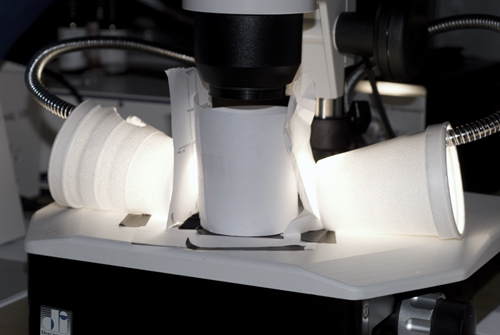
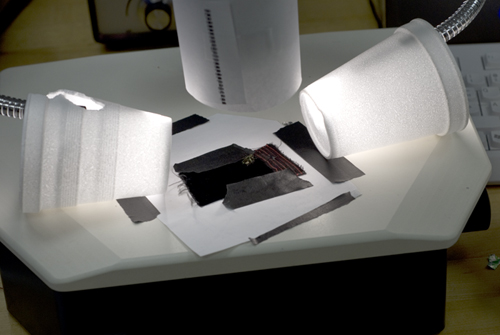
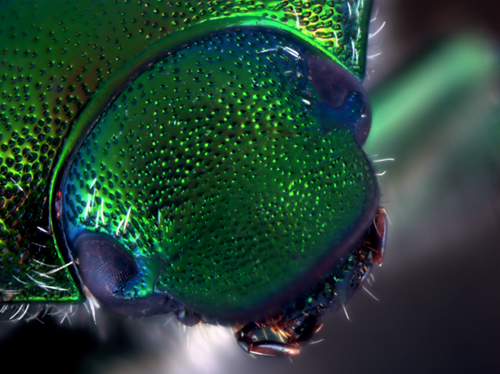
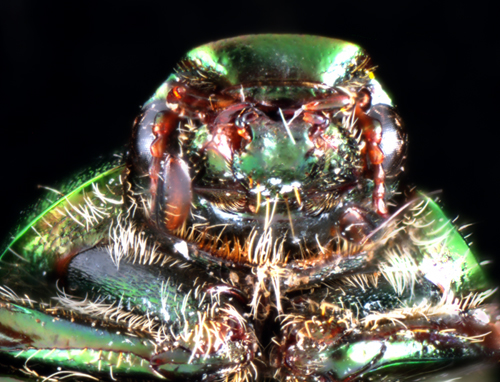
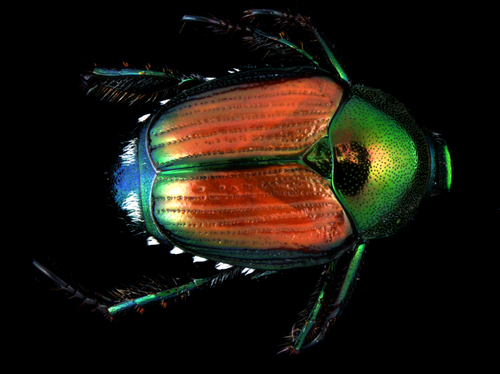
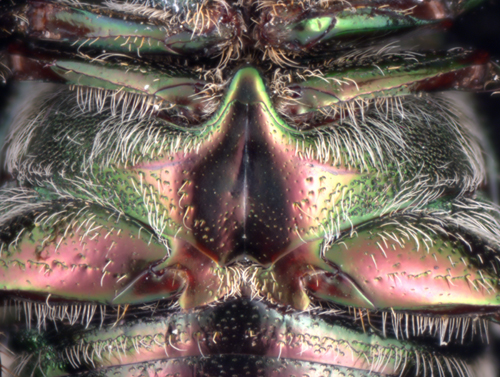
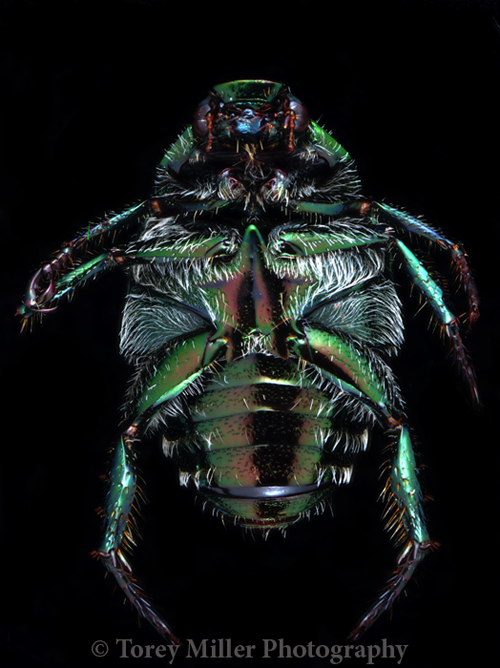
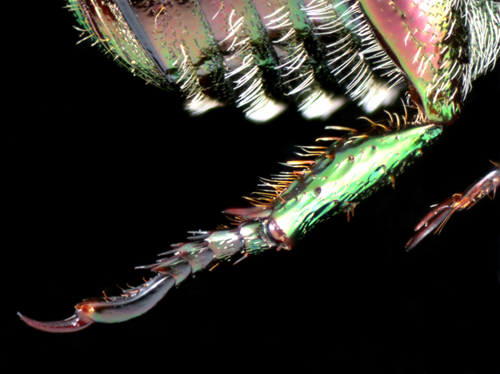
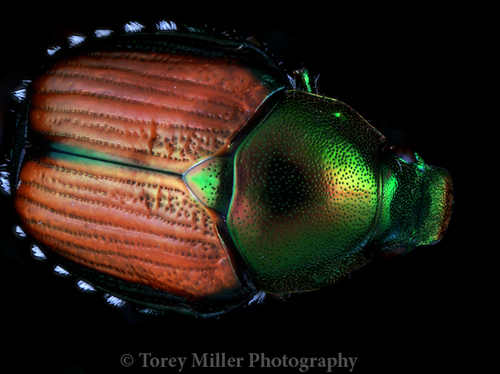
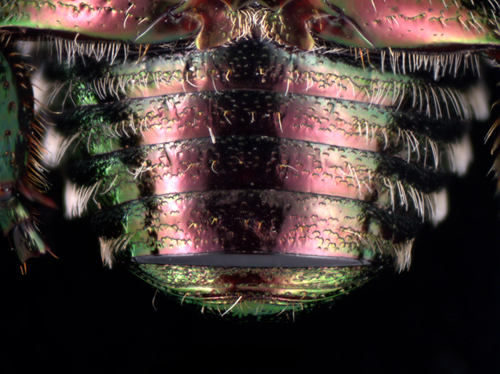
Sources:
http://www.ca.uky.edu/entomology/entfacts/ef409.asp
http://counties.cce.cornell.edu/yates/6710.htm
http://www.thenatureinus.com